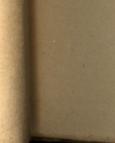16 DOGS AND ALL ABOUT THEM
With proper feeding, grooming, exercise, and cleanliness, any large dog can be kept in good condition without resort to medicine, the use of which should be strictly prohibited unless er such
conditions there is real need for it. Mastiffs successpful stud dogs and brood are far more likely to prove bitches than those to which deleterious drugs are constantly being given.
CHAPTER III
THE BULLDOG
THE Bulldog is known to have been domiciled in this country for several centuries. Like the Mastiff, of which it is a smaller form, it is a descendant of the " Alaunt," Mastive, or Bandog, described by Dr. Caius, who states that " the Mastyve or Bandogge is vaste, huge, stubborne, ougly and eager, of a hevy, and burthenous body, and therefore but of little swiftnesse, terrible and frightful to beholde, and more fearce and fell than any Arcadian curre."
The first mention of " Bulldog " as the distinctive name of this now national breed occurs in a letter, written by Prestwich Eaton from St. Sebastian to George Wellingham in St. Swithin's Lane, London, in 1631 or 1632, " for a good Mastive dogge, a case of bottles replenished with the best lickour, and pray proceur mee two good bulldoggs, and let them be sent by ye first shipp." Obviously the name was derived from the dog's association with the sport of bull-baiting. The object aimed at in that pursuit was that the dog should pin and hold the bull by the muzzle, and not leave it. The bull was naturally helpless when seized in his most tender part. As he lowered his head in order to use his horns it was necessary for the dog to keep close to the ground, or, in the words of the old fanciers of the sport, to " play low." Larger dogs were at a disadvantage in this respect, and, therefore, those of smaller proportions, which were quite as suitable for the sport, were selected. The average height of the dogs was about 16 inches, and the weight was generally about 45 lbs., whilst the body was broad, muscular, and compact, as is shown in Scott's well-known engraving of " Crib and Rosa."
C 17
